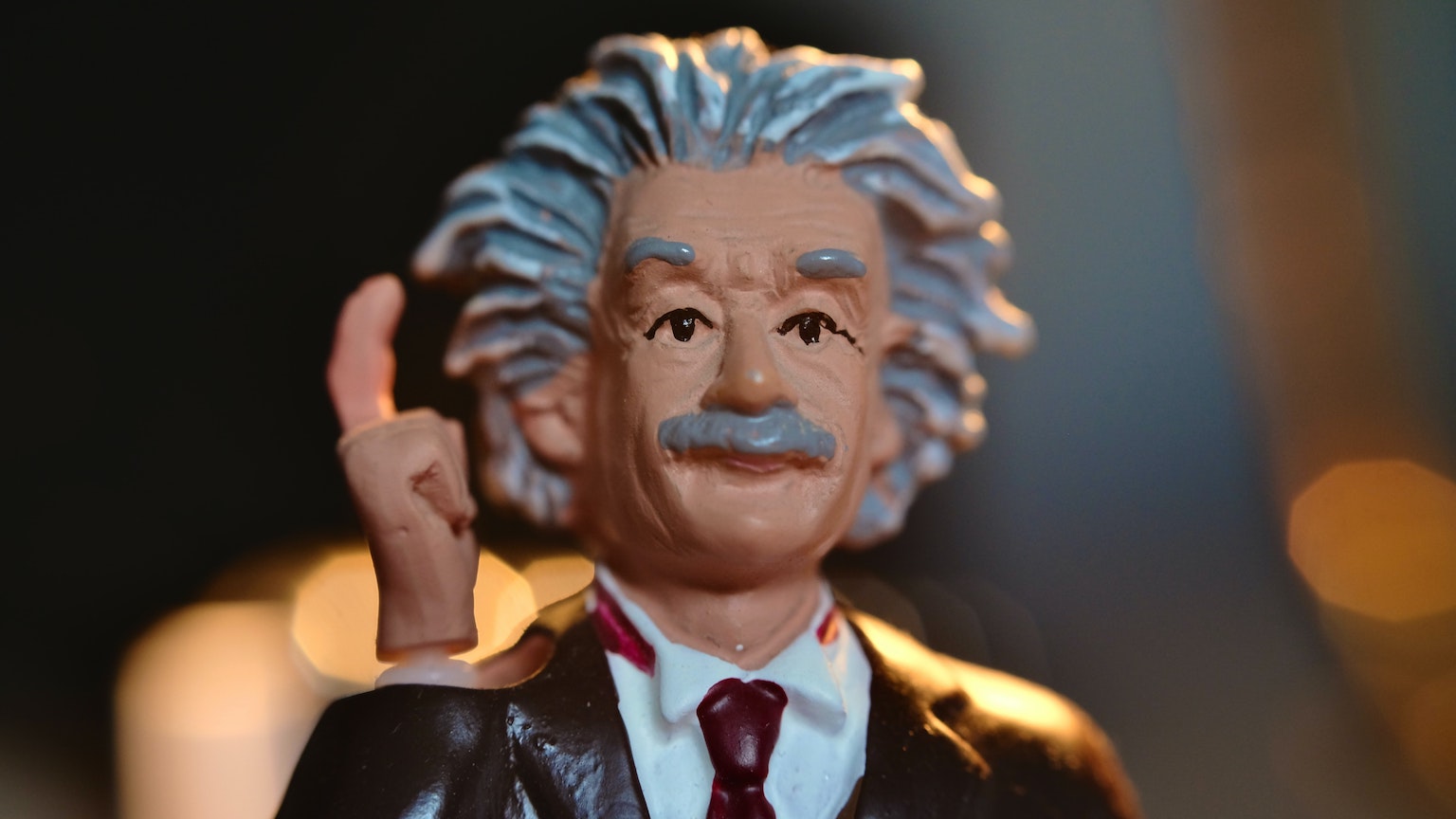To be successful, you need to fail 16% of the time

- Einstein and Mozart were massively productive because they understood the value of easing back and chilling out.
- Modern theories of learning say that success is impossible without some degree of failure.
- Aim for the Goldilocks zone when setting a failure rate: roughly 16 percent.
If you want to succeed really, really badly, the paradoxical solution proposed by many successful people is to ease up. Albert Einstein was obscenely productive, but his productivity came in bursts. Between those bursts, he was gentle with himself. “If my work isn’t going well,” he said, “I lie down in the middle of a workday and gaze at the ceiling while I listen and visualize what goes on in my imagination.” Try to imagine Einstein, white mane and all, lying on his back and staring at the blank ceiling at two in the afternoon. This isn’t the Einstein of myth, but it’s central to what made him great. Rather than fighting friction, Einstein allowed it to wash over him like a wave, using it as an opportunity to take two or three mental steps backward so he could “listen” to his imagination. Instead of fighting friction, he allowed it to defeat him—and, in doing so, learned to fail well.
The same was true of Mozart, who allowed himself to slow down between bursts of productivity. Mozart found the best of his compositions arrived when he was most placid. “When I am, as it were, completely myself,” he wrote, “entirely alone, and of good cheer—say, traveling in a carriage or walking after a good meal or during the night when I cannot sleep—it is on such occasions that my ideas flow best and most abundantly.” Mozart may have experienced fevered bursts of productivity, but those bursts are hard to sustain. You don’t make a string of breakthroughs, composing six hundred symphonies and concertos, by wrestling your demons every time your productivity hits a wall. Like Einstein, Mozart recognized that the quickest way to guide a derailed mind toward productivity is not to exert brute force, but to seek space and solitude—and to accept that some failure is necessary.
Einstein and Mozart were one-in-a-billion talents, which is why it’s surprising to learn they were in some ways type B personalities. Neither one stood atop a metaphorical mountain proclaiming his love for the hustle. Instead, both retreated inward, embraced quiet, and allowed their ideas to land in good time.
One of the benefits of this laid-back approach to friction is that it makes room for failure. It accepts that we can’t always produce at peak productivity, and that highs will be separated by lows. Modern theories of learning and development acknowledge that progress is impossible without challenge, which in turn means you’ll have to fail before you can succeed.
Several years ago, a team of psychologists and neuroscientists sought to identify the perfect success-to-failure ratio. At one end of the spectrum, you have perfect success, and at the other you have abject failure. Both poles are demotivating, but for different reasons. Perfect success is boring and uninspiring, and abject failure is exhausting and demoralizing. Somewhere between these extremes is a sweet spot that maximizes long-term progress. “When we learn something new, like a language or musical instrument,” the authors wrote, “we often seek challenges at the edge of our competence—not so hard that we are discouraged, but not so easy that we get bored. This simple intuition, that there is a sweet spot of difficulty, a ‘Goldilocks zone,’ for motivation and learning is at the heart of modern teaching methods.”
According to the researchers, the optimal error rate is 15.87 percent. Obviously the true rate varies more than that disarmingly precise number suggests. On good days you might tolerate a higher error rate, and on days when you’re discouraged or tired, you might prefer to avoid error altogether. Some tasks probably demand higher failure rates than others, and perhaps you need to embrace more failure if you’re in a hurry to learn. Personality probably matters, too. Einstein and Mozart, with their laid-back approach to friction, may have been more willing to tolerate error than most people are, and that may explain a part of their ongoing success.
The optimal error rate is 15.87 percent.
What makes the mere existence of this optimal failure rate valuable is that it does two things for you. First, it gives you an objective benchmark for optimal difficulty. If you’re failing much more than once in every five or six attempts, you’re probably failing too often; and if you almost never fail or fail rarely, you’re probably not failing often enough. Second, though, from an emotional perspective, the optimal error rate licenses you to fail. Not only is failing okay, but it’s necessary. Without those moments staring at their literal and metaphorical ceilings, Einstein and Mozart may have been less productive and less successful across time. Those blips and troughs weren’t glitches but rather essential components of the process.
This one-in-five-or-six failure metric is a useful guide when you’re learning a new skill, particularly as technology makes it easier to quantify success. Whether you’re learning a new language, learning to code, learning a new soccer technique, training to run a particular distance at a particular pace, or trying to meditate for a certain duration uninterrupted, you’ll be able to quantify your success. At first, your failure rate may be higher than one in six, but if it isn’t declining to that level, you’ll know you’re failing too often to be productive.
The same rules apply to organizations, which also do best when they tolerate some failure. In the late 1990s, a decade before the rise of smartphones, Motorola launched a satellite phone provider called Iridium. The company’s name referred to the seventy-seventh element in the periodic table because Iridium’s original plans required a network of seventy-seven satellites that orbited the Earth, just as Iridium’s seventy-seven electrons orbit its nucleus. The company’s promise was spectacular: a global phone network that offered perfect reception anywhere on the planet, and a vanishingly small dropped-call rate. Even today’s most sophisticated smartphones can’t compete with Iridium’s decades-old technology. Wall Street experts were enamored with Iridium as its stock hit the market, but the company’s focus on perfect clarity and perfect connections made the phones prohibitively expensive. Iridium’s executives adopted a zero-tolerance approach to product flaws, but that was not what phone users wanted. They were willing to accept a small drop in clarity and a small rise in dropped calls in exchange for significantly cheaper phones and service plans. The surest way to get stuck is to rigidly pursue perfection.
Assuming that setbacks are to some extent necessary, the next question is how to manage them. How do you deal with the roughly 15.87 percent of occasions when things don’t go to plan? The answer is not just to fail, but to fail well, and some people fail better than others.





